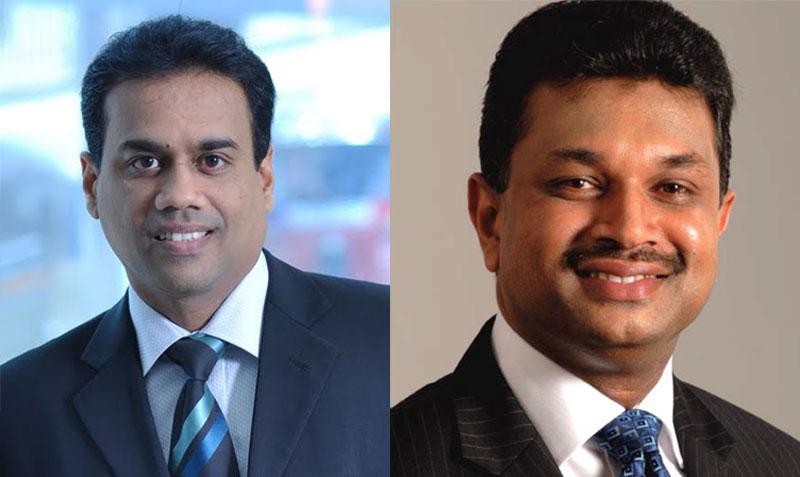
The adulterated lubricant market which is going unchecked despite repeated calls from the industry to put a halt to the illegal trade is causing a substantial loss to government coffers and stifling the growth of the regulated industry, heads of licensed lubricant companies said.
“The government is losing around 20 percent of the industry’s revenue per annum held by adulterators and unauthorized importers of lubricant products, a lubricant manufacturer and exporter said.
According to industry sources 20 locations of adulteration and sales of illegally imported products have been identified during the past two years but to date no action has been taken to bring the culprits to task.
The lubricant industry recorded a double digit growth in 2009 with the end of the war. However, since then growth has been at a snail pace hovering around 3-4 percent per annum.
Chevron Lubricants Lanka PLC Managing Director/CEO Kishu Gomes said the grey market accounts for a larger market share than the formal sector. The formal sector comprises 13 licensed players who share a market of around 65 million litres.
“I have sent the details of adulterators to the Public Utilities Commission of Sri Lanka (PUCSL) and the successive Ministers of Petroleum Resources Development. The industry players have briefed the minister on the issue in the presence of the Police, Customs, PUCSL, Attorney General’s Department and the Consumer Affairs Authority,” Gomes said.
However, according to him, the Police Department has sighted loopholes in the law which prevent it from being able to prosecute the culprits. The Petroleum Special Provisions (Amendment) Act has not yet been approved resulting in the PUCSL, the power and petroleum resource sector regulator, not being able to prosecute the wrong doers.
The Additional Secretary to the Petroleum Resources Development Ministry who has been entrusted with the task of looking into the matter has shown interest to put a stop to the illegal business. However, up to now, not a single raid has been carried out to bring the culprits to task despite the assurance and the positive response given to the industry.
The irony according to industry experts is that the government wants to further liberalise the lubricant industry enabling more players to enter the industry which is already saturated.
“All these are being done when the country does not have even an independent laboratory to test the oils imported in finished form, whether it meets the specifications laid down by the regulator,” Gomes said.
The adulterated market accounts for around 15 percent of the total market while unlawful imports accounts for around 10 percent of the market. Grease markets opened illegally are mushrooming in the country according to industry sources.
The damage to machinery due to the application of adulterated and illegal products is enormous as the machinery need to be replaced by imports at a huge cost. The players have to bear this cost in addition to the license fee which is Rs. 5 million per player and the sales commission which is .5 percent.
Industry players said while license holders import lubricants that also includes synthetic lubricants under HS Code: 27 at a higher Customs duty non license holders import at a lower duty.
Laugfs Holdings Chairman W.K.H. Wegapitiya said the current scenario in the industry where adulterations and imports of finished products are encouraged does not help the lubricant industry to grow. In other countries local production is encouraged by imposing higher tariffs for importation of finished products and a lower tariff for importation of raw materials for local manufacture and exports.
‘It is just the opposite that is happening in Sri Lanka where the duty for finished product imports has been brought down which discourages local manufacture and exports of lubricant products,” Wegapitiya said.
The duty gap between import of raw material and finished product imports was brought down from 13 percent to 7 percent. The license holders request the government to retain the 13 percent duty gap.
Industry experts said such policies will not help in value creation for the economy but would only help other countries to make money. Reduction in the duty gap for raw material imports and finished product importation will dissuade investments for local manufacture and exports.
Laugfs, Indian Oil and Chevron Lubricants produce lubricant products locally using imported raw material.
PUCSL Director General Dhamitha Kumarasinghe said the PUCSL is only a shadow regulator that only could advise the Ministry on various aspects. Until the Petroleum Special Provisions 9 (Amendment) Act is enacted the Commission has no powers to act on the illegal trade.
However, he said the PUCSL has planned to hold a consultation with the industry stakeholders on April 24 at the BMICH to enable anyone to raise questions and make their observations on matters relating to the lubricant industry.
“A consultation paper highlighting issues and calling for representation from the stakeholders is already on the PUCSL website,’ Kumarasinghe said.
The global lubricants market was valued at 39,762.66 kilo tons in 2017 and is expected to register a compound annual growth rate (CAGR) of 2.18%, during the forecast period from 2018-2202.
Lubricants are vital for proper functioning of machines. They are used to reduce wear and friction between surfaces in close proximity and that move relative to each other. They are usually in liquid, semi-liqluid or solid state. Superior-quality lubricants possess various characteristics, such as a high viscosity index, high level of thermal stability, low freezing point and high boiling point.
These features help reduce friction between surfaces of machine parts, rate of wear and increase operational efficiency. They act as cooling fluids and remove any residual deposition over mechanical parts, thereby, increasing operating lifespan. The rapid industrialization in BRIC nations and increasing demand for automobiles in the Asia-Pacific are the major reasons driving the lubricants market.
